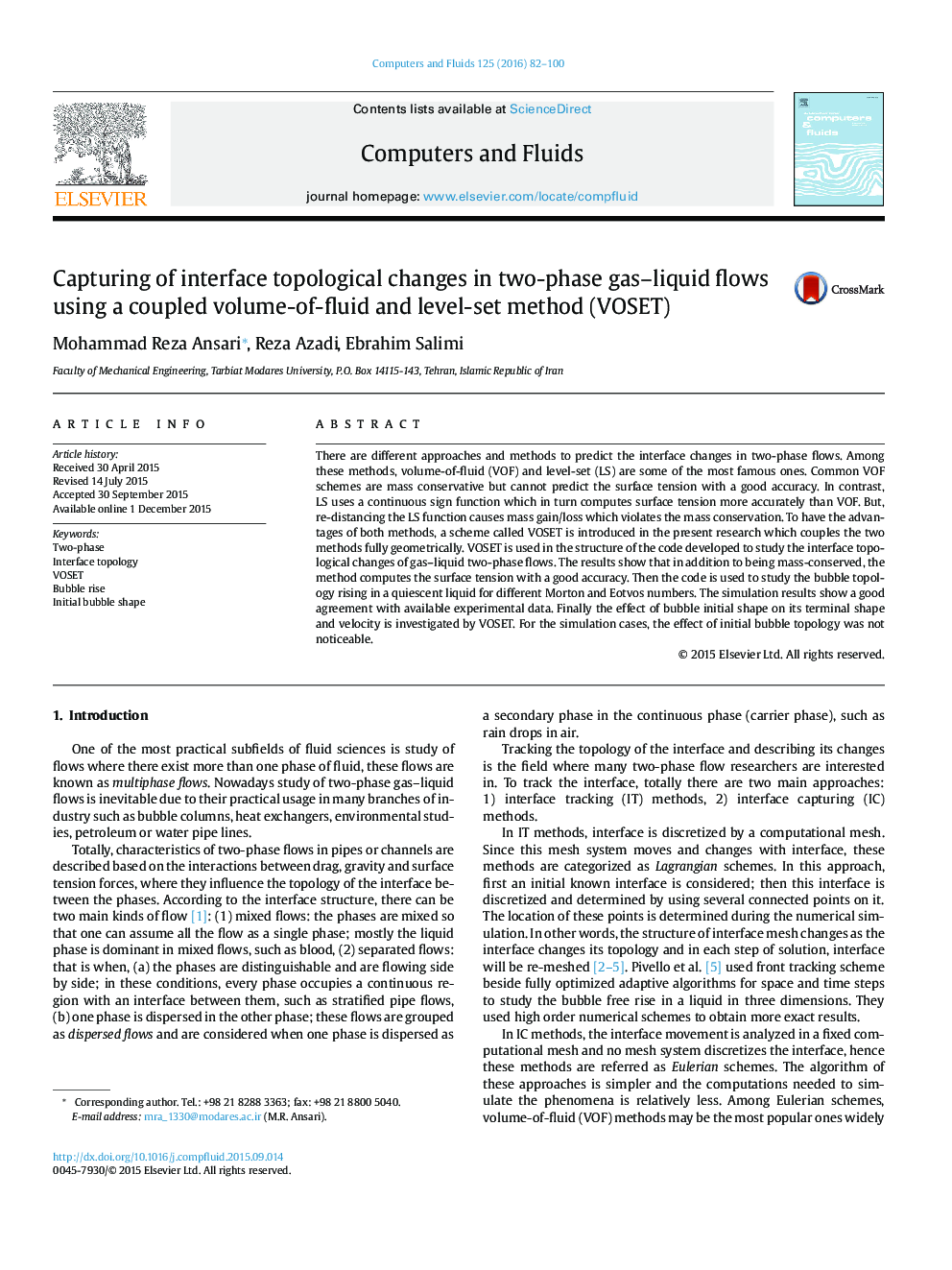| Article ID | Journal | Published Year | Pages | File Type |
|---|---|---|---|---|
| 761480 | Computers & Fluids | 2016 | 19 Pages |
•A code has been developed to study the interface changes of gas–liquid two-phase flows.•A scheme called VOSET is introduced in the present research.•The method computes the surface tension with a good accuracy.•The effect of bubble initial topology on its terminal shape is investigated by VOSET.
There are different approaches and methods to predict the interface changes in two-phase flows. Among these methods, volume-of-fluid (VOF) and level-set (LS) are some of the most famous ones. Common VOF schemes are mass conservative but cannot predict the surface tension with a good accuracy. In contrast, LS uses a continuous sign function which in turn computes surface tension more accurately than VOF. But, re-distancing the LS function causes mass gain/loss which violates the mass conservation. To have the advantages of both methods, a scheme called VOSET is introduced in the present research which couples the two methods fully geometrically. VOSET is used in the structure of the code developed to study the interface topological changes of gas–liquid two-phase flows. The results show that in addition to being mass-conserved, the method computes the surface tension with a good accuracy. Then the code is used to study the bubble topology rising in a quiescent liquid for different Morton and Eotvos numbers. The simulation results show a good agreement with available experimental data. Finally the effect of bubble initial shape on its terminal shape and velocity is investigated by VOSET. For the simulation cases, the effect of initial bubble topology was not noticeable.
